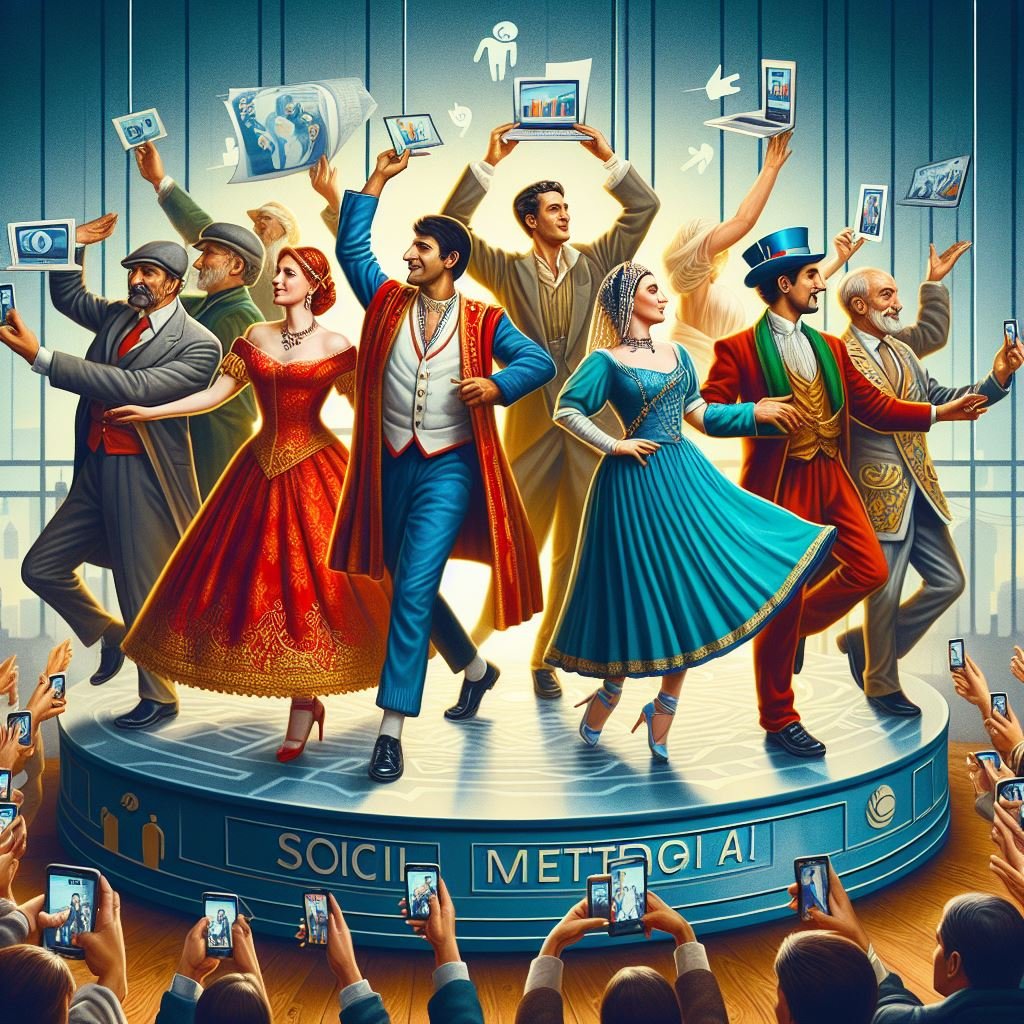Men and Women in the Internet and Social Media: A Dance with Real-Life Stereotypes in the Virtual Ballroom
The internet and social media, those swirling galaxies of information and connection, promise a utopian escape from the shackles of real-life limitations. Yet, even in this seemingly free-flowing digital realm, the gravitational pull of real-life stereotypes casts long shadows, shaping how men and women navigate the virtual landscape. This article delves into the intricate dance between gender and online communication, exploring how traditional stereotypes manifest and are challenged in the digital sphere.
1. The Digital Divide: Bridging the Gap or Widening the Canyon?
Research suggests a gender gap in internet access and engagement, with women in some regions lagging behind men. This lack of access can limit women's voices and opportunities, perpetuating existing power imbalances. However, for those online, the playing field isn't entirely leveled.
2. Stereotypes on Steroids: Amplifying the Familiar on Unfamiliar Terrain
The familiar tropes of gender stereotypes take on new life online. Women are often stereotyped as more emotional, communicative, and inclined to share personal information, while men are seen as more assertive, logical, and focused on self-promotion. These stereotypes can manifest in online behavior, with women receiving disproportionate levels of online harassment and cyberbullying, while men dominate certain technical and gaming spaces.
3. Filter, Facade, and Fabrication: Gender Performance in the Digital Age
Social media creates a stage for carefully curated self-presentations. Women are often pressured to conform to narrow beauty standards, facing critiques and objectification when they deviate. Men, on the other hand, grapple with societal expectations of online performance, often engaging in braggadocio and displays of dominance. This pressure to perform prescribed gender roles can stifle authenticity and limit the diversity of voices online.
4. Beyond the Binaries: Challenging the Spectrum of Stereotypes
The internet also provides a platform for challenging binary notions of gender. The emergence of LGBTQ+ voices and communities online has reshaped how we understand and express gender identity. Online spaces provide safe havens for those who don't conform to traditional norms, fostering acceptance and a more nuanced understanding of the gender spectrum.
5. Redefining the Dance: Can We Rewrite the Script?
So, how do we move past the shadow of stereotypes in the online world? One key step is awareness. Recognizing how these biases might influence our own online behavior and the behavior of others is crucial. We can actively challenge online harassment and discrimination, promoting inclusivity and respect for diverse voices. Additionally, platforms themselves can play a role in mitigating bias through design and moderation techniques.
Ultimately, reshaping the online discourse around gender requires a collective effort. By amplifying marginalized voices, promoting responsible online behavior, and advocating for inclusive platforms, we can create a digital space that truly reflects the vibrant diversity of human experience.
This is just a starting point, and you can explore this topic further by:
- Providing specific examples of how gender stereotypes manifest in online interactions.
- Highlighting the positive ways in which social media empowers and connects women and LGBTQ+ individuals.
- Discussing the role of algorithms and platform design in perpetuating or mitigating bias.
- Offering concrete strategies for individuals and platforms to promote a more inclusive and equitable online environment.
By delving deeper into these ideas and adding your own insights, you can create a thought-provoking and impactful article that sparks a conversation about how we can build a more inclusive and authentic internet for all
- #OnlineGenderDynamics
- #SocialMediaStereotypes
- #VirtualBallroom
- #GenderInTech
- #DigitalGenderRoles
- #InternetStereotypes
- #SocialMediaInsights
- #DigitalDance
- #GenderEqualityOnline
- #VirtualGenderRoles
- #TechAndGender
- #DigitalStereotypes
- #OnlineEquality
- #SocialMediaDance
- #GenderInfluence
- #DigitalChallenges
- #VirtualStereotypes
- #GenderInclusion
- #InternetDynamics
- #RealLifeVersusVirtual
- #amoltechnicalguru

